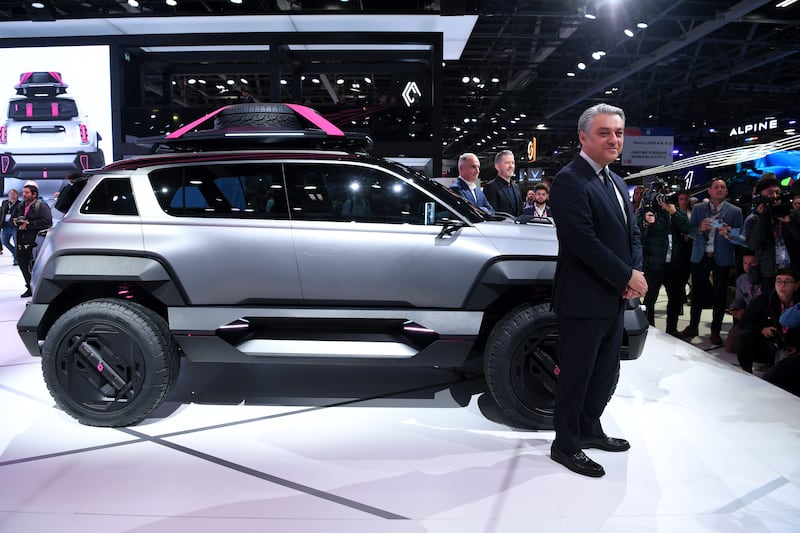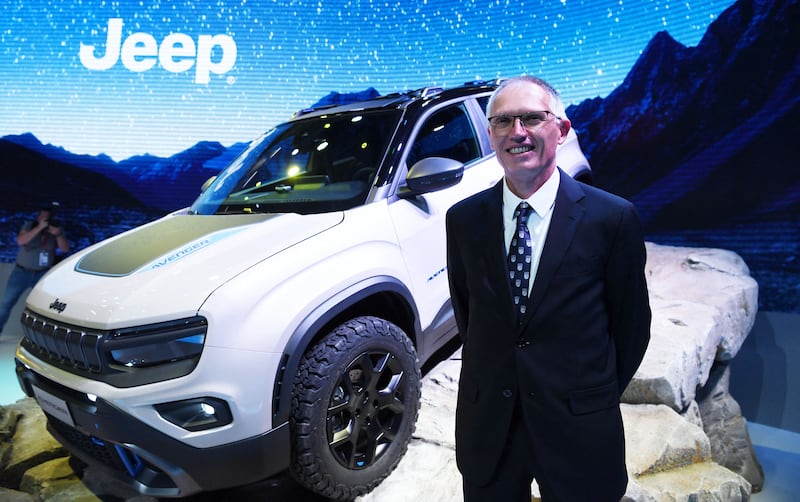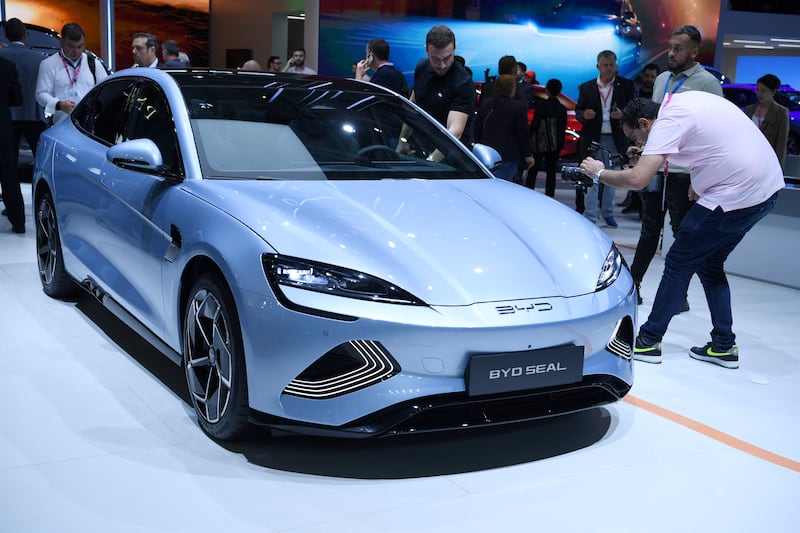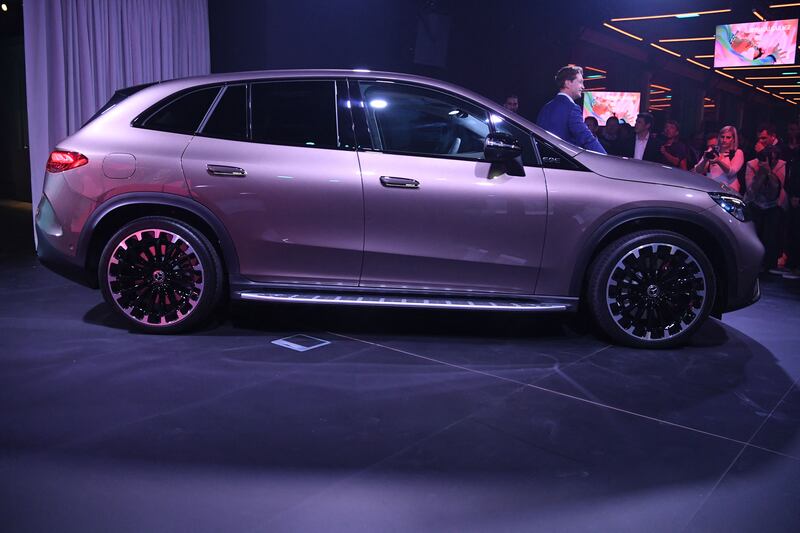We’d almost all forgotten what it was like to look at cars in a huge, well-lit room but here we are, back in Paris having had a two-year Covid-enforced hiatus and it feels pretty good.
Some motor show glitz and glamour may not necessarily be the most appropriate things at a time of war as well as climactic and economic turmoil, but they are a welcome break nonetheless.
The show itself is physically smaller than it has been in the past — down now to one big hall at the Expo Porte de Versailles, but many of the car companies are pointing out that ‘in-person’ events such as this still have a relevant place in the ever-more digital world.
This being Paris, unsurprisingly it’s the French brands that have pushed the boat out the furthest, determined to make a good showing on home soil. It’s arguably Renault that has made the best showing, with the 4Ever concept being a solid second-album effort in its retro-styled EV lineup.
Protestant churches face a day of reckoning with North’s inquiry into mother and baby homes
Pat Leahy: Smart people still insist the truth of a patent absurdity – that Gerry Adams was never in the IRA
The top 25 women’s sporting moments of the year: 25-6 revealed with Mona McSharry, Rachael Blackmore and relay team featuring
Former Tory minister Steve Baker: ‘Ireland has been treated badly by the UK. It’s f**king shaming’
Set to sit alongside the equally retro Renault 5, and to go on sale in 2025, the 4Ever concept is effectively divided in two around the waist.
Everything above that waistline, finished in a shiny gunmetal grey paint, is: “very, very close to the final production car” we were told by Renault’s director of advanced design, Sandeep Bhambra. “The stuff below that, the dark grey bits and the big wheels, they’re more concept-car.”
So, how do you translate that original 4′s cheapness to a pricier new EV version? “What we decided to keep in the DNA of the car is the versatility, the boldness, the symbol of freedom” Laure Grégoire, the 4Ever project leader told The Irish Times.

“The cheap part is not part of our story. The competition will, of course, increase a lot, especially in this B-SUV electric part of the market. But we are really confident in the value of this car for the customer, and the reinvention of the Renault 4 is also a way to give the reassurance of a brand such as Renault, which has more than 120 years of experience. This is also how we show a difference to other newcomers on the market.”
When the final production version arrives, expect it to have a 54kWh battery, a 136hp electric motor, and around 400km of range on a full charge. Just don’t expect it to be as affordable as the original.
Renault’s sporty Alpine brand also brought showed up with some glitz — the Alpenglow hypercar concept is supposedly hydrogen powered, and more importantly drops some hints about what Alpine’s future electric sports cars might look like, once the brand is finished with the retro styling of the current A110 (although Alpine did say that the new electric A110 will stick closely to the current car’s look). Speaking of that A110, Alpine brought along a stripped-out and lighter version of that car, dubbed the A110 R, which doesn’t have any more horsepower but which does have better aerodynamics and a sharper chassis. It’s set to take on the likes of the Porsche Cayman GT4.
Stellantis — the massive car-making group of which Peugeot, Citroen, Opel, and Fiat are prominent members — was making waves at the Paris show in more ways than one. Jeep, a fellow Stellantsis member, brought along its new electric Avenger model, which is due to go on sale next year and the company is making quite the claim for its battery range.

According to Jeep, the Avenger uses the same basic platform as the current Peugeot e-2008 and the Opel Mokka-e, but it will be capable of doing as much as 551km on a full charge. That’s a little hard to believe, given that the current cars built on that platform, with a 50kWh battery, struggle to hit a reliable 320km and the Avenger’s battery will be a mere 4kWh greater in its capacity.
To be fair, Jeep is saying that around 400km is a more realistic range, and that 551km is ‘depending on driving conditions’ but the brand would want to be careful about being too grandiose in its claims before a customer has even gotten behind the wheel.
On a happier note, Stellantis chief Carlos Tavares did announce that Alfa Romeo — so long seen as Italy’s sickest motoring man — has a secure future and that the brand is set to announce that it is already turning a profit.
Tavares went on to criticise the political response to the huge influx of Chinese electric vehicles in Europe, saying that European laws on EVs are driving car makers to build ever-more expensive models, leaving the middle and lower market open to Chinese car brands. Tavares’ solution? More subsidies for European vehicles, or import tariffs for Chinese cars.
His comments are not being made in isolation. On the opening morning of the Paris show, environmental think-tank T&E noted that European electric car sales are ‘stagnating’ as Chinese brands race ahead. Julia Poliscanova, senior director at Transport & Environment, said: “European carmakers have slammed the brakes on their electric car offering at a time when Chinese and American carmakers are rapidly bringing new models to the market.
If Europe wants to maintain the competitiveness of its car industry, the EU must introduce a strong industrial policy of its own to match the Chinese and Americans’ muscular support for EVs. The continent’s climate and jobs are at stake. The share of electric car sales in Europe dropped to 11 per cent for the first half of 2022, down from 13 per cent in the second half of last year.
Growing electric vehicle sales in the United States and China suggest that a lack of regulatory incentives, not a supply chain crunch, is the main cause of Europe’s sluggish electrification efforts.”

It was notable that China’s biggest electric car maker, BYD took a major stand in Paris, as it looks to gear up for a major European market push.
Mind you, the Paris show is not all about French and Chinese brands. Mercedes has chosen Paris for the debut of its EQE SUV, based on the electric EQE saloon and using the same 90kWh battery pack and standard 292hp electric motor as the lower-slung car.
That 292hp electric motor comes with 565Nm of torque, and if you want more then there is a 4MATIC four-wheel drive version with the same 292hp, but a chunkier 765Nm of torque, or a range-topping 407hp version with 858Nm of torque.

You’ll probably end up going for the basic single-motor version, though, as that’s the one with the longest range. At 590km it’s still shy of the 640km offered by the lower, sleeker EQE saloon but that’s still better than Audi can currently offer with its e-tron quattro SUV but some way short of the 612km offered by some versions of the BMW iX. There’s a heat-pump heating system fitted as standard, which should help eke out a few extra kilometres in winter.
Of course, if you really don’t care about range you could go for the AMG versions. There are two, badged 43 and 53 and which can have as much as 687hp and 1,000Nm of torque depending on the width of your cheque book. Even the standard model won’t be cheap — expect a six-figure price tag once the EQE SUV arrives on these shores next year.





